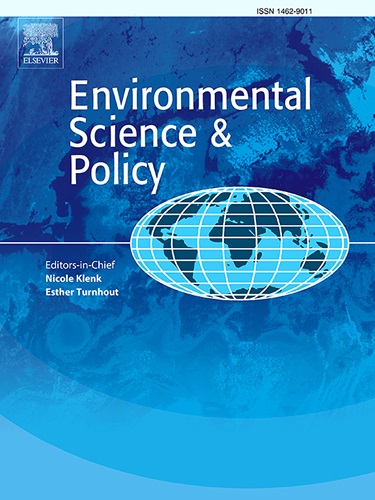Drivers of water use change: A multiscale integrated analysis for 13 European countries
IF 5.2
2区 环境科学与生态学
Q1 ENVIRONMENTAL SCIENCES
引用次数: 0
Abstract
In this paper, the water metabolism of 13 European countries and the main drivers of water use are analysed for the time period 2010–2020. By combining the MuSIASEM approach and an index decomposition technique, the water changes of countries is investigated through sectoral disaggregation, human time allocation and GDP generation. Compared to existing studies, the proposed methodology allows the integration of information across levels and domains and is suitable to analyse the water use in relation to the socio-economic characteristics of countries. The results of this study, show that the EU integration strategies and the policy initiatives aiming to improve the water management of the Member States have contributed to the water efficiency increase. However, consumer responsibility and demand related strategies are also needed, as GDP change was the main driver of water use. The proposed methodology is suitable to be replicated across different geographical areas, as it compares the water use in relation to the specific characteristics of countries. Given the rising challenges imposed by climatic changes further analyses are needed to investigate how efficiency and demand-related policies can be used to support the transition from a crisis to a risk management strategy.
水资源利用变化的驱动因素:13个欧洲国家的多尺度综合分析
本文分析了2010-2020年期间13个欧洲国家的水代谢和用水的主要驱动因素。通过结合MuSIASEM方法和指数分解技术,通过部门分解、人类时间分配和GDP生成来调查各国的水变化。与现有的研究相比,拟议的方法可以综合各层次和领域的资料,适合分析与各国社会经济特点有关的用水情况。本研究结果表明,欧盟一体化战略和旨在改善成员国水资源管理的政策举措对水资源效率的提高做出了贡献。然而,也需要消费者责任和与需求相关的战略,因为GDP变化是用水量的主要驱动因素。拟议的方法适合在不同的地理区域复制,因为它比较了各国的具体特点与用水的关系。鉴于气候变化带来的挑战日益严峻,需要进一步分析研究如何利用效率和与需求相关的政策来支持从危机向风险管理战略的过渡。
本文章由计算机程序翻译,如有差异,请以英文原文为准。
求助全文
约1分钟内获得全文
求助全文
来源期刊

Environmental Science & Policy
环境科学-环境科学
CiteScore
10.90
自引率
8.30%
发文量
332
审稿时长
68 days
期刊介绍:
Environmental Science & Policy promotes communication among government, business and industry, academia, and non-governmental organisations who are instrumental in the solution of environmental problems. It also seeks to advance interdisciplinary research of policy relevance on environmental issues such as climate change, biodiversity, environmental pollution and wastes, renewable and non-renewable natural resources, sustainability, and the interactions among these issues. The journal emphasises the linkages between these environmental issues and social and economic issues such as production, transport, consumption, growth, demographic changes, well-being, and health. However, the subject coverage will not be restricted to these issues and the introduction of new dimensions will be encouraged.
 求助内容:
求助内容: 应助结果提醒方式:
应助结果提醒方式:


